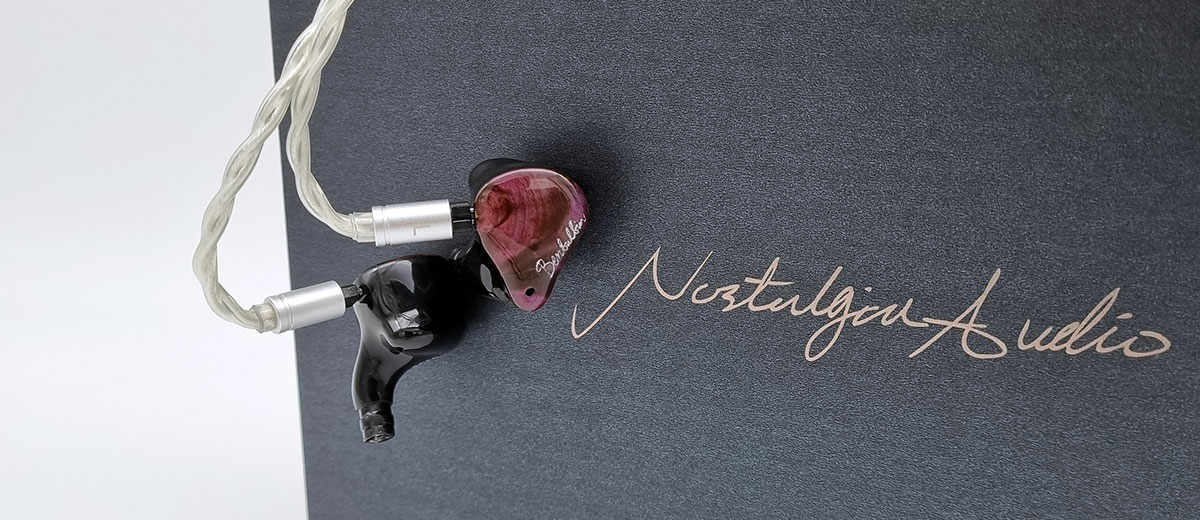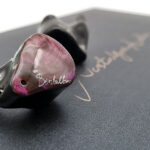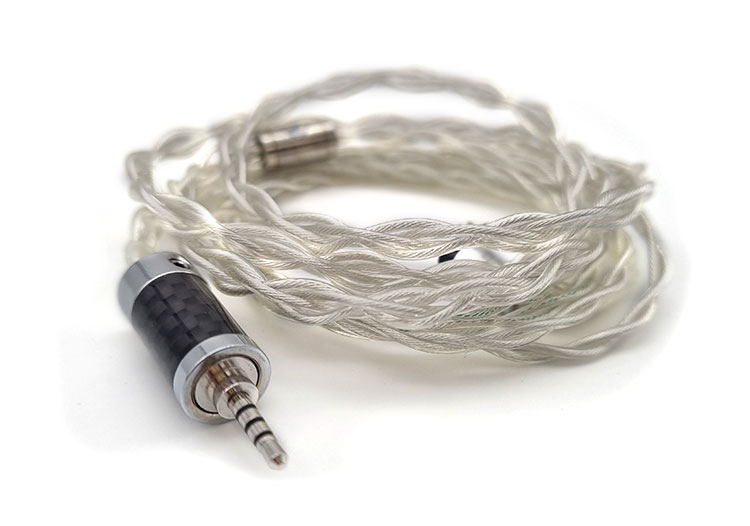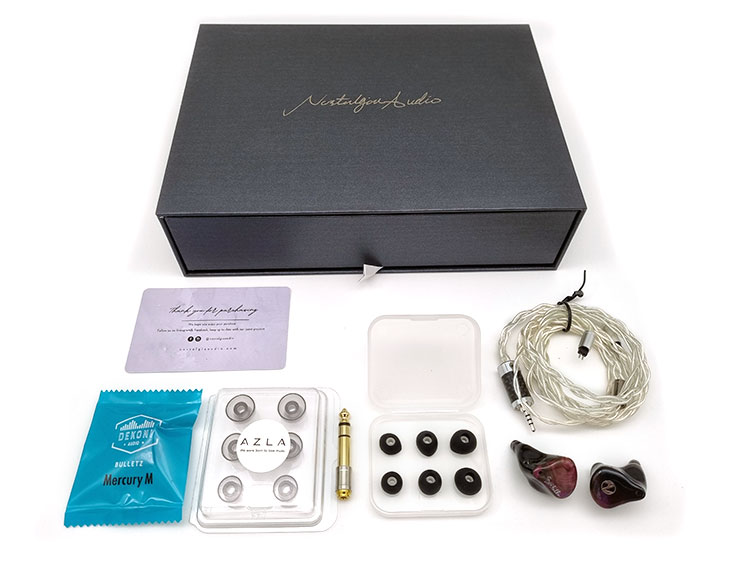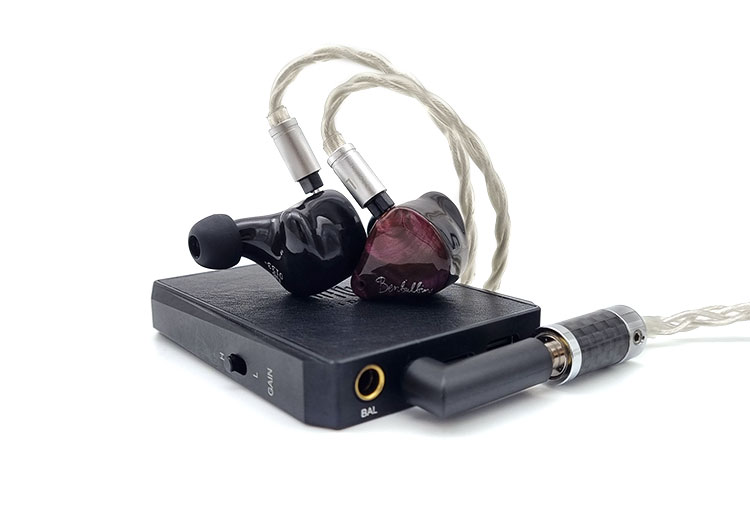Nostalgia Audio Benbulbin is a 5 driver hybrid IEM featuring a single 11mm titanium-coated dynamic driver and 4 BA drivers. It is priced at $899.
Disclaimer: The Nostalgia Audio Benbulbin sent to us is a sample in exchange for our honest opinion in this review. We thank the team at Nostalgia Audio for giving us this opportunity.
To read more about in-ear monitor products we reviewed on Headfonics click here.
Note, this 2-page review follows our new scoring guidelines for 2020 which you can read up on here.
Nostalgia Audio is a bespoke portable audio brand from Hong Kong. Featuring a small, but comprehensive portfolio, Nostalgia Audio is focusing primarily on both IEMs and high-end cables.
In this review, we’ll be focusing on their IEM debut, the Benbulbin. Priced at $899, the upstart brand is orienting its product as a midrange, flagship featuring premium hardware and specifications; an ambitious exercise for a company in its infancy.
With competing iconoclasts such as Moondrop having already ascended to cult-like stardom, Nostalgia Audio faces stiff competition from a plethora of established brands. But at the end of the day, the proof is in the pudding! Performance trumps all.
Tech Highlights
According to the official website, the Benbulbin hosts a traditional, hybrid array of transducers; one 11mm titanium-coated dynamic driver, two mid-range frequency balanced armatures, and two high-range frequency balanced armatures.
Utilizing a 3-way crossover to split the entire frequency band, the Benbulbin is attempting to leverage the characteristic benefits of both balanced armatures and dynamic drivers, filling in the respective gaps of each driver.
Balanced armatures are tactile, agile, and deft at handling sudden changes in amplitude, and dynamic drivers are renowned for natural timbral accuracy, and the displacement of air in the lower registers.
Other noteworthy highlights include its alluring epoxy wood faceplate featuring paint-like swirls, and a 3D-printed shell that was manufactured and painstakingly finished in Poland.
Moreover, the included 2-pin cables are available on Nostalgia Audio. Titled the “Prelude”, the cables are made of 4 braids of silver-plated copper Litz, terminated in a 2.5mm rhodium balanced connector with 6% Silver Solder from Audio Note.
Design
Aesthetically, the burgundy and teal faceplates are exceptionally finished, the epoxy lacquer successfully covering the seam between them and the 3D-printed shells.
For testing purposes, I adopted the standard medium-sized silicon tips included in the package. The shells’ nozzles each feature raised lips, allowing each tip to wrap around tautly around each nozzle without budging an inch.
Apart from the three bores at the nozzles’ lips, I did not notice any pin-hole-sized vents to be found on each shell. Thence, isolation was above average, with wind noise from one’s surroundings doing little to circumscribe its ability to eliminate outside noise. Ambient noise on public transport was largely minimized once I’d achieved an air-tight seal.
Stock Cable
Notably, the included “Prelude” cable’s TPU sheathing is pliable, barely retaining any kinks or awkward bends. From its premium hardware to its iridescent, silver-plated copper Litz wires, there is nothing of note worth criticizing.
However, one minor aesthetic annoyance pertains to the way the pins attach to the Benbulbin. The 2-pin female ends on the Benbulbin are unnecessarily tight. Because of that, the 2-pin male connectors on the Prelude do not sit flush. A minor grievance, but one that certainly places undue strain on the exposed segments of the pins.
Comfort and Fit
At first glance, the Benbulbin adopts the traditional universal, acrylic mold that’s been widely adopted across the entire portable audio industry. However, it is 20% larger than your average, run-of-the-mill IEM form factor.
As a result, its larger shell does protrude outward quite a fair bit. However, its proportionally larger footprint does not detract from its already comfortable form factor. Additionally, the nozzle length on both shells extends slightly more vis-à-vis a standard-sized IEM.
The IEM’s oblong shells are barely noticed until you purposefully fidget them around. Apart from that, extensive listening sessions were a breeze.
Package & Accessories
The Benbulbin is lavishly adorned with numerous accessories. The box comes encased in a grey-cardboard sleeve, featuring an embossed print of a bundle of IEM cables, with the words “Nostalgia Audio” embossed on the left-hand side of the sleeve.
Beneath the hood, you’ll be greeted by an abundance of accessories, organized in an orderly fashion. Firstly, you’ll be greeted by the Benbulbin themselves, a sage-green leather case with a magnetic flap, multiple ear tips including Dekoni Memory Foam, Silicon, and Azla Sedna Elastec Ear tips.
Stowed away inside the green case are the “Prelude Cables” and a metal, warranty card. It’s a package that showcases the necessary amenities, presented in an opulent package.
Sound Impressions
Summary
The Benbulbin boasts a relatively neutral sonic profile, with a boost in the highs and sub-bass regions. Conversely, its mid-to-upper bass regions taper off to favor a milder presentation. There is a moderately-sized tilt in the lower-bass for sub-bass aplomb, but with a sustain that’s fairly short-lived.
It appears that titanium-coated drivers have been expertly implemented to make up for the inherent weaknesses of a standard balanced armature array. The Benbulbin responds snappily to sudden, sporadic changes in amplitude.
However, there are some novel quirks to be found across the rest of the spectrum. The mid-range has a grainier, upper-mid character that enlivens its presentation.
The widely panned “resonance frequency” in the inner ear is not present in the Benbulbin, but its treble has enough forward bite without losing out on subtle nuances and transitions. The lower midrange floor displays a proclivity for tame warmth; it’s tastefully done where it appears to blend congruently with the mid-bass regions.
The Benbulbin highs remain fairly neutral, its porous treble-region creates an illusory, V-shaped-like presentation without the technical limitations associated with it.
Timbre
The Benbulbin timbral properties can be encapsulated as such; there is an omnipresent veil of “light warmth” that gently permeates throughout.
Analog recordings with distinct tape noise have an “old-timey” feel. It’s not unapologetically warm, where the upper-to-lower mid ranges are smothered by a droning low-end. Instead, its existence remained subtle in the foreground, the keyword being subtle.
This presentation complements reverb-rich recordings, jangly electric guitars incredibly well (think Khruangbin or Ty Segall). Their characteristic timbre-rich twang is resonantly rich, acting as a tasteful accompaniment.
Instruments
Moreover, its quad balanced-armature array, in conjunction with its dynamic driver, works together inter-harmoniously to create a hyper-realistic stage of instruments, and vocals.
As one would naturally expect, they are energetic, vivid, and lean in their sonic presentation. Synthesizers are precise and clinical instruments, and they are strengthened positively by the Benbulbin.
From a technical perspective, they successfully mitigate the emergence of sonic artifacts such as ear-piercing treble glare; nothing noteworthy detracts from its timbral properties, nor does it sacrifice detail or realism.
Vocals
Female vocals in the soprano to mezzo-soprano range sound ethereal-like, bereft of any coarse peaks. Sibilance in distinct consonants was nowhere to be found; they are instead, portrayed in a favorable light.
That’s where the illusory “V-shape signature” comes in. The juxtaposition of the two competing driver technologies results in a light-to-moderate V-shaped signature as a result of tasteful modifications to the upper and lower registers.
This tuning philosophy strongly favors modern, studio recordings, older analog masters second. It’s a versatile, clean yet guttural profile that’s amorphous, and adaptable to a multitude of genres. It’s a jack of all trades, BUT it is a master of some.
Staging
Because of its coherent presentation, the imaging capabilities on the Benbulbin are excellent. Instrument sections, vocals, and faint nuances are captured with ease. Its silent, black background makes narrowing each minute detail down effortless.
The Benbulbin remains unfazed with tracks featuring swirling crescendos, or an unforgiving assault of instruments playing concurrently. As discussed earlier, the design implementations made to the upper and lower registers carve each frequency band into interdependent regions, reinforcing its ability to image concisely by a huge margin. And yet, the sum is still greater than its parts.
Many IEMs with “V-shaped” frequency responses struggle to capture subtle passages from a distance. Here, the perceived lateral axis is adequately distant, but it never quite reaches the technical superiority of a pair of full-sized headphones.
Dynamics
Balanced armatures are known for their no-nonsense transient-response and spontaneous decay. Their tactility, and deftness in terms of attack, sustain and decay are unparalleled.
In this particular instance, Benbulbin’s balanced armature array does just that. Its highs-to-mids are assertive and incisive, responding to sudden changes in amplitude without overstaying its welcome sustain-wise. It’s a “quick on its toes” transient response that many audio enthusiasts look out for in balanced armatures. It’s an austere presentation, but one that ticks all the right boxes.
In contrast, its titanium-coated dynamic driver is proportionally slower in its transients. It’s deliberately incorporated to solidify Benbulbin’s low-end response, buttressing its already clean presentation with a danceable, rhythmic dynamism. However, it is done with a graceful refrain, where its low-end could be described as marginally conservative vis-à-vis bass cannon IEMs.
At the same time, multiple-driver arrays with active crossovers are often bogged down by transient smearing; a phenomenon that arises from timing delays, and phases between multiple drivers. This doesn’t appear to be the case. The consolidation of these two divergent technologies has resulted in the opposite, its organic presentation comparable to that of a single transducer.
Described as a whole, the Benbulbin displays remarkable transient capabilities and dynamic range, with a carefully considered bass-bloom that results in a signature that is far from sterile; a smooth-sailing transition from top to bottom.
Click on page 2 below for pairings and select comparisons

